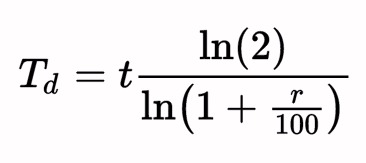- Starlight-Star-Bright-I.mp3
- Starlight-Star-Bright-I.mp4
- Starlight-Star-Bright-II.mp3
- Starlight-Star-Bright-II.mp4
- Starlight-Star-Bright-organ-prelude.mp3
[Intro]
Starlight, star bright.
First star I see tonight.
Wish I may, wish I might.
Have the wish I wish, tonight —
Shine on people of the Earth
(shine on and on)
[Verse 1]
As you look out through the stars
Do you wonder where we are
… in time and space
[Chorus]
Shine on people of the Earth
(shine on and on)
Give the meaning a new birth
(shine on and on)
Shine on everyone
[Bridge]
The human race
Set the pace
That we accelerate
Called it fate
Non-ceasing
(Increasing)
Everyday
(Faster, faster)
In disaster’s way
[Verse 2]
As you look out through the stars
Do you wonder where we are
… in time and space
[Chorus]
Shine on people of the Earth
(shine on and on)
Give the meaning a new birth
(shine on and on)
Shine on everyone
[Bridge]
The human race
Set the pace
That we accelerate
Called it fate
Non-ceasing
(Increasing)
Everyday
(Faster, faster)
In disaster’s way
[Outro]
Starlight, star bright.
First star I see tonight.
Shine on people of the Earth
(shine on and on)
A SCIENCE NOTE
How fast are humans causing the climate to change? When we started our experiments in the 1990’s, we thought the time scale was in millenniums. If climate change were happening on a linear basis, we would have been correct; however, by the late 90’s we were convinced climate change was non-linear.
Doubling time refers to the duration needed for a quantity to double in size, a characteristic of exponential growth. By 2020, substantial data revealed that the doubling time for certain anthropogenic climate impacts had decreased significantly, shifting from 100 years to merely 10 years. For instance, the rate of sea level rise has surged from approximately 1.5 millimeters per year to over 3 millimeters. This trend suggests that the doubling period is likely to further contract, heightening the prospect of sea levels ascending at a rate of one foot per year by 2050.

T_{d}=t \frac{\ln (2)}{\ln \left(1+\frac{r}{100}\right)}
| = | doubling time | |
| = | time | |
| = | growth rate |
Though the rate of change in climate disasters’ intensity, duration, and likelihood vary according to the type of extreme weather, a “rule-of-thumb” can be derived from the Canada wildfires of 2023. The World Weather Attribution Organization found, “Climate change made the cumulative severity of Quebec’s 2023 fire season to the end of July around 50% more intense, and seasons of this severity at least seven times more likely to occur.”
50% more intense
7 x more likely
These numbers may be similar in other catastrophes like atmospheric rivers, hurricanes, heat waves, droughts, floods, tornadoes, and sea level rise.
If the doubling time remains at 10 years, we could see extreme events 100% more intense and/or longer in duration, as well as, 14 times more likely to occur. As mentioned above, we expect the doubling time to be reduced. If the doubling time is 5 years, in ten years we could see 200% more intense and longer extreme weather events being 28 times more likely to occur.
2024 Update
Global average sea level rose by about 0.3 inches (0.76 centimeters) from 2022 to 2023, according to a NASA-led analysis. When we authored this paper in 2023, we could not have foreseen the swift acceleration of this trend. Initially projected to double over a span of 100 years, the rate of sea level rise dramatically escalated, shortening the doubling period to a mere 10 years by 2020. Shockingly, recent observations suggest that this doubling period has further compressed to just 2 years. It is imperative to acknowledge and address this concerning trend, hoping it is not a foreboding indication of a new norm but rather an anomaly.